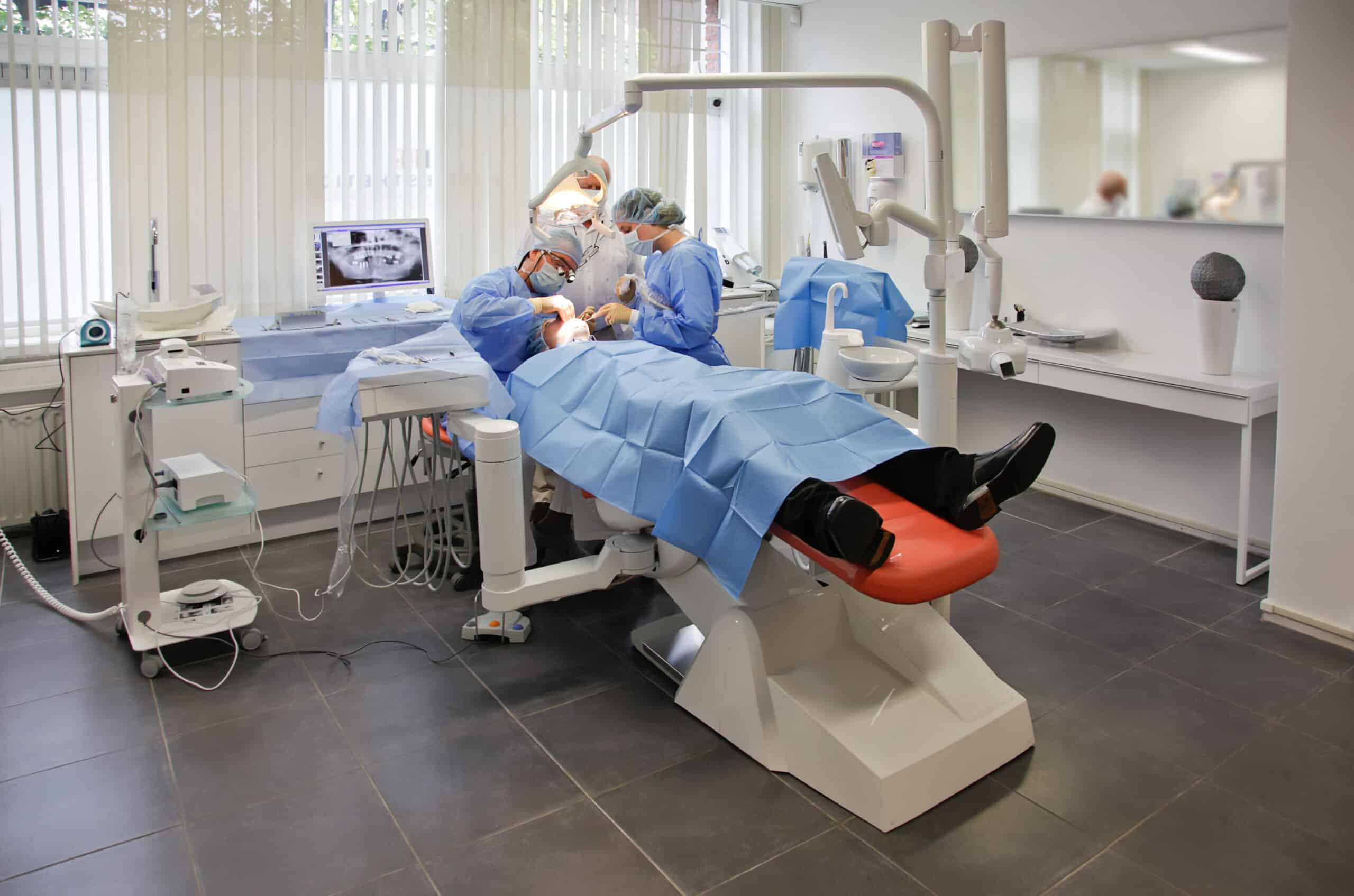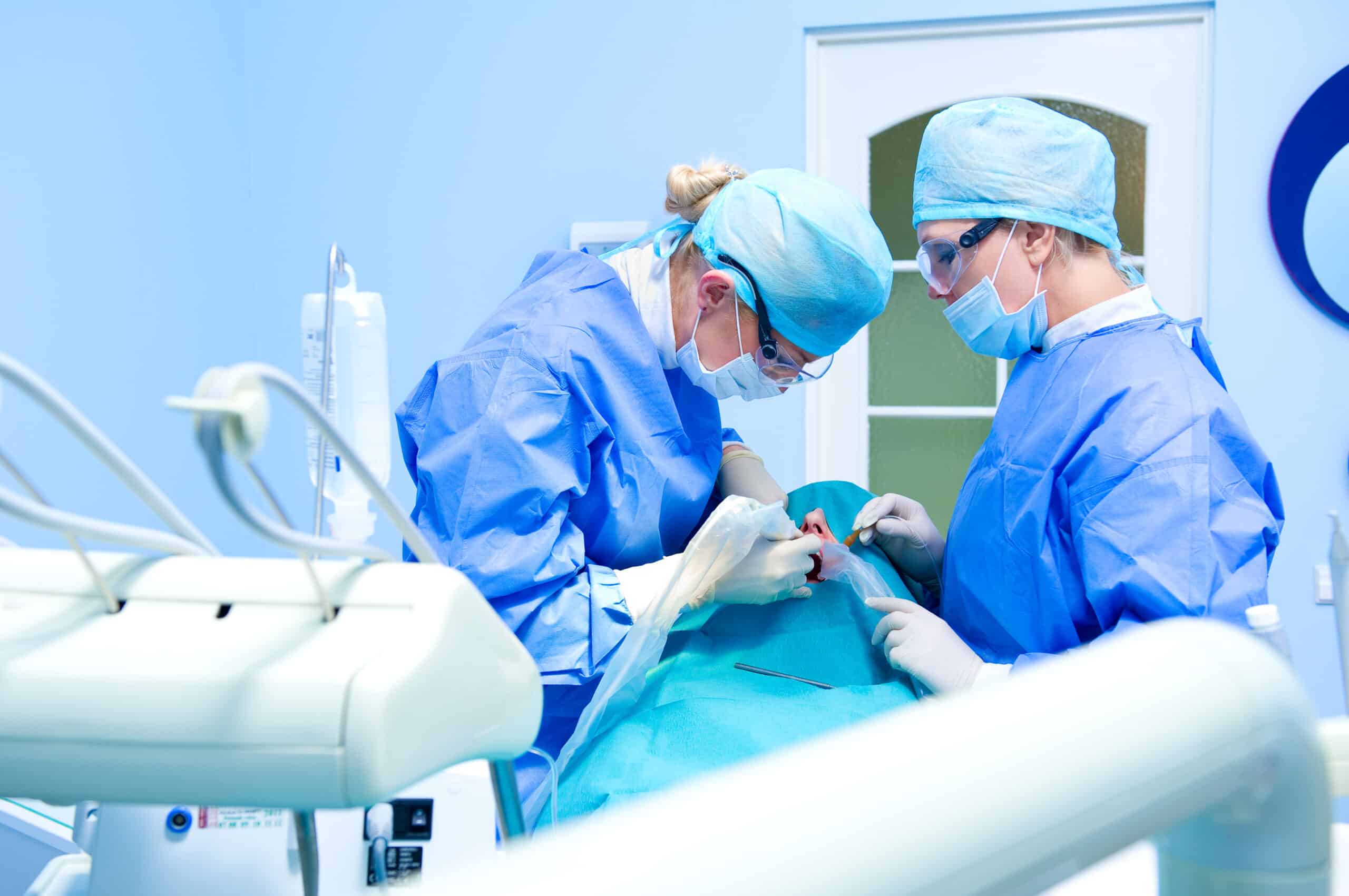Do your gums bleed when you brush your teeth? You may not be aware of it, but it is one of the main symptoms of periodontal diseases.
Both gingivitis and periodontitis are gum diseases, although in their more advanced stages they also affect the entire tooth structure.
Thus, if not treated in time, it can endanger the stability of the teeth.
These oral conditions are the most common -together with caries- in the field of dentistry and are directly related to our oral hygiene.
What are periodontal diseases?
Periodontal diseases are those pathologies that affect the periodontium, formed by the tissues that cover, protect and support the teeth.
We are talking about the gum, the periodontal ligament, the root cementum and the alveolar bone.
Gingivitis and periodontitis are considered to be the main gum diseases.
In general, periodontal diseases are caused by the accumulation of bacteria along the gum line.
For this reason, the main reason why gingivitis and periodontitis develop is due to poor or inadequate oral hygiene.
The progressive formation of bacterial plaque in the mouth ends up solidifying, giving rise to dental tartar.
Once we have a lot of calculus accumulated on the edge of the gum, it is no longer possible to eliminate it by means of home hygiene, but dental prophylaxis is necessary.
Therefore, there is no home cure to stop periodontitis.
chronic periodontitis
Enlarge image
GINGIVITIS AND PERIODONTITIS
Types of periodontal diseases: gingivitis and periodontitis
Actually, the difference between gingivitis and periodontitis lies in how advanced the condition is.
Therefore, they are two different states within periodontal diseases.
While gingivitis can be reversible, pyorrhea is chronic and can be cured through specific treatment.
What is gingivitis?
Gingivitis corresponds to the initial stage of periodontal disease.
Its identification is relatively simple, since it has a very visible symptomatology in almost all cases.
The most relevant signs are bleeding gums during brushing, as well as inflammation and reddening of the tissues.
However, as it is a condition that progressively progresses, it is possible that you suffer from it and do not have bleeding gums.
This situation is especially common in the case of patients who smoke, since tobacco acts as an inhibitor of bleeding.
Treatment of gingivitis
As we have previously mentioned, the accumulation of bacterial plaque is the main cause of gingivitis.
If it is not effectively removed, it adheres to the surface of the teeth and irritates the mucosa.
Therefore, if gingivitis is incipient, the ideal treatment to stop its progress is professional dental hygiene.
Its objective is to effectively eliminate the accumulations of bacterial plaque and tartar that are lodged between the teeth and at the gum line.
In our dental clinic, the prophylaxis lasts approximately 50 minutes, so it is much more thorough than the one offered in other centers.
At the end of the appointment, one of our hygienists will teach the patient the brushing and flossing techniques according to the characteristics of their teeth.
In addition, she can recommend the use of other oral hygiene aids such as an oral irrigator or interproximal brushes.
Treatment against gingivitis
Enlarge image
TREATMENT AGAINST GINGIVITIS
Periodontitis, what is it?
If gingivitis is not treated in time, the harmful action of bacteria continues and tartar begins to accumulate under the gums, causing pyorrhea.
Therefore, periodontitis is a chronic disease whose main cause is the accumulation of bacterial plaque below the gum line.
In the initial stages, the symptoms are very similar to those of gingivitis, but once advanced periodontitis is developed, tooth mobility and even loss of teeth is caused.
Within this type of periodontal disease we can distinguish two types: chronic and aggressive.
Chronic periodontitis
Chronic periodontitis has a slow progression and is the most frequent type. Its most evident symptoms are the formation of periodontal pockets and gum recession.
Although the accumulation of calculus is its main cause, there are some factors that increase the risk of suffering pyorrhea.
One of them is smoking, but the presence of different systemic diseases also plays an important role.
Aggressive periodontitis
Aggressive periodontitis, on the other hand, is largely determined by a genetic hereditary factor.
This type of pyorrhea has a rapid progression and causes the loss of alveolar and insertion bone of the tooth.
While chronic periodontitis affects mainly adults, aggressive periodontitis tends to appear mainly in adolescents and young people between 10 and 30 years of age.
In addition, a distinction can be made within aggressive periodontitis:
Localized: when it is present in the incisors and first molars and there is loss of insertion in the interproximal area of two dental pieces (generally, in the molars).
It is usually diagnosed at puberty.
Generalized: when there are at least three different teeth damaged.
Its incidence is usually diagnosed around the age of 30.
Periodontitis, is there a cure?
Once we have explained what periodontal diseases consist of, you are probably wondering how to cure periodontitis.
The indicated process to eradicate this pathology is a periodontal treatment, the steps of which we will explain below.
Put yourself in good hands
See a periodontal specialist as soon as you notice any of the symptoms described above, so you can address the condition as soon as possible.
During the first appointment, the dentist will review the general condition of your mouth and assess the degree of progress of gingivitis and periodontitis.
To do this, he or she will perform a periodontal study that includes taking photographs, digital X-rays and measurements with the flowmeter.
Thanks to this last action, it is possible to check the depth of the periodontal pockets and whether or not there is bone loss.
Depending on the severity of the periodontitis, it is possible to perform a microbiological study to identify the bacteria present in the oral cavity and to prescribe antibiotic treatment.
In order to remove calculus and colonies of pathogens and bacteria, the periodontist performs scaling and root planing.
This procedure, also called dental curettage, is performed in two appointments and consists of cleaning below the gum line.
It is performed under local anesthesia to avoid any discomfort or pain to the patient.
After these appointments, the patient will have to attend a re-evaluation appointment after 4 to 6 weeks.
At these appointments, the specialist will take the pertinent measurements again to evaluate the results obtained after the periodontal treatments.
Pyorrhea can be cured
Enlarge image
PERIODONTAL TREATMENT
What if periodontal treatment does not cure pyorrhea?
In more advanced stages of the disease, when the depth of the periodontal pockets exceeds 6 millimeters, this treatment may be insufficient.
In such cases, periodontal access surgery is indicated, consisting of lifting the affected gum to clean the subgingival area.
Depending on whether bone or white tissue loss has occurred, it is possible to perform bone grafting, gingival grafting or both.
This surgical intervention is performed after re-evaluation by the periodontist if he/she considers that the periodontitis has not been effectively eradicated.
Periodontal patients should have a check-up every 4 to 6 months in order to avoid recurrence and maintain control of their oral health.
WE TREAT YOUR PERIODONTITIS
Periodontal diseases and their relationship with the rest of the body.
As we have explained above, periodontal diseases are almost always attributed to poor dental hygiene.
However, there are also other risk factors, some of them directly related to the rest of your general health.
Thus, certain systemic diseases, such as diabetes, can lead to the development of gingivitis and periodontitis.
In addition, the condition of the gums can also affect breathing and pregnancy.
Prevention is the best treatment for periodontal diseases.
Although we cannot have control over genetic factors or other diseases that affect the gums, it is possible to prevent periodontal diseases.
Through proper daily oral hygiene routines, we can remove most of the bacterial plaque from our mouth.
This habit, together with regular visits to a trusted dental clinic, will ensure that we do not have to suffer for the stability of our teeth and gums.
The ideal is to perform a dental prophylaxis at least once a year, not only to clean our teeth, but also to prevent any other problem.



